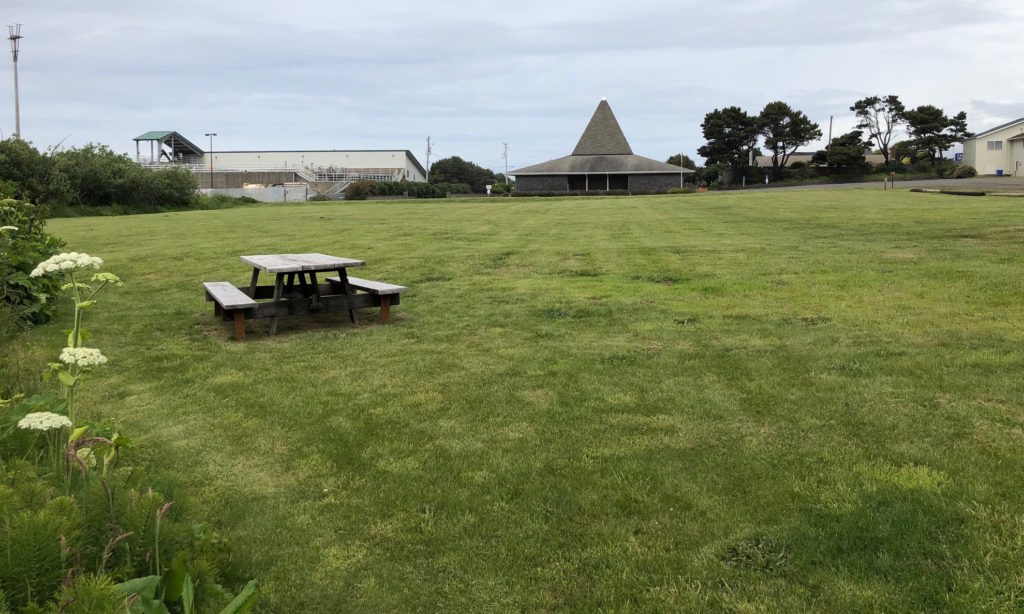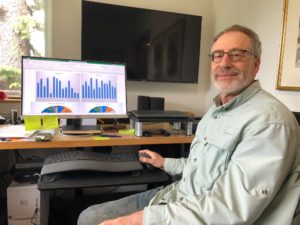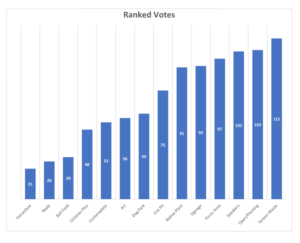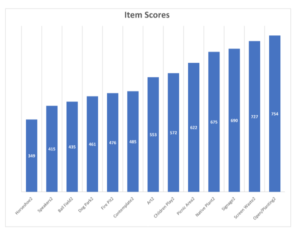
By QUINTON SMITH/YachatsNews.com
The most under-utilized open space in Yachats is the big grass field behind the Commons and City Hall.
Now the city’s Parks & Commons Commission may have some new direction on what possibly to do with it.
Although there was a master plan created for it in 2011, the city has done virtually nothing to follow those 10-year-old recommendations or make any improvements.
That may change this year, following a new community survey that asked 900 property owners their opinions on a wide range of ideas and possibilities for the field.
The results of a survey are back – there were 220 forms returned — and commission members are beginning to digest and discuss what the results could mean and what to do next. The commission is scheduled to continue that discussion at its next meeting, July 6.

The commission decided to seek the community’s opinion in May after it wrestled with how to respond to three requests to carve out specific areas of the large grass field, said commission member Craig Berdie, who designed the survey and tabulated the results.
Residents or groups had approached the city about using a portion of the field for a dog park, for a kids’ play area, and an improved ball or soccer field.
Unsure what to do, the commission decided to ask the community their thoughts, mailing a survey to property owners within the city.
Respondents were asked their opinions on 13 features ranging from a horseshoe pit, to a dog park, to a fire pit, picnic area, native plantings and a gathering area.
One part of the survey asked people to rank their top five choices – which forced respondents to pick five features out of the 13. A second part asked respondents to weigh in on all 13 options, ranking each on a scale of 1-5.
The survey closed May 31 and Berdie compiled the results in time for the commission’s meeting early this month.
Of the 220 returned surveys, 68 percent came from full-time Yachats residents and 32 percent from people with second homes or other kinds of property in the city. There was no significant difference between responses from the two groups, Berdie said.
If there was one idea that people clearly favored in both calculations, it was to somehow use trees and possibly a berm on the north side of the field to screen the city’s wastewater treatment plant.
“That’s obvious,” Berdie said. “Why haven’t we done that already?”
But after that there was not a single item that stood out, Berdie and commission members said, but a clear theme – don’t carve up the space for a specific group or activity but make the entire space more enticing.

“It’s relatively clear,” Dean Schrock said at the commission’s June meeting. “We need to consider ways a space can be used for more people – a space available for more people without fencing off areas for specific groups.”
Commission chair Dawn Keller and vice chair Linda Johnson agreed.
“They want it to look nice … but not dedicate a lot of space to one particular thing,” Keller said. “To make what we have better, more ascetically pleasing.”
Based on their comments after seeing the survey results, there is not support on the commission to create space for a dog park.

In Berdie’s view, the most favored of the suggested elements have a theme and can work together. That might mean a network of paths framed by native plants, areas for picnic tables, a small gathering space, and interpretive signs focusing on history, native Americans and nature.
Commission member George Mazieka suggested a basic design at first and then “sit back and observe how people use it.” The design can be tweaked depending on initial use, he said.
The commission intends to continue the discussion – and to see if there is a way forward by taking the major themes and possibly having a professional designer work with the ideas. There could be money in the commission’s budget for that, Berdie said.
The planning could be done this year, he believes, and then a project proposed to the city at large to see what kind of support – from the city’s budget and donations – there might be.
“The survey, by its nature, treated each of them as unique,” Berdie said. “But in reality, they are not. They can work together.
“The message seems clear – ‘Keep it as an open space, but improve the design’,” he said.


